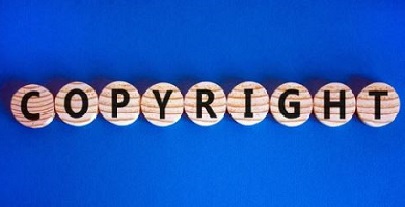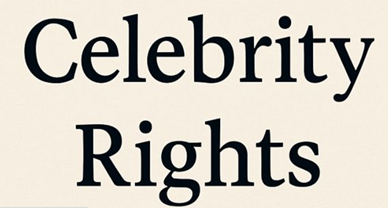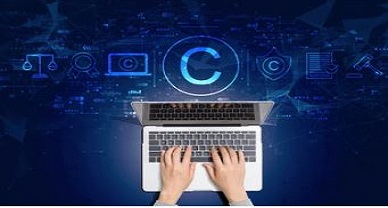Digitalization And Copyright Law
Introduction
Technology is no more separated and has become the integral part of our lives. It has opened wide range of facilities for us like entertainment, education, advertisements, communication etc. Digitalization has paved the way towards a new era with new dimensions and goals that will lead towards a significant revolution in the living of the human beings.
However, with more advantages, some disadvantages also come into play. The availability of a large variety of information has also increased the risk of Copyright Infringement due to its easy accessibility and dissemination. This has led to varying degrees of copyright infringements in this digital era.
Copyright And Copyright Law
Copyright is one of the crucial parts of Intellectual Property Rights which helps the owner of any creative work to have a legal right over the possession of such work or art. Such work may include any literary or artistic work such as books, articles, films, databases, computer programs etc.

In order to protect the interest of such copyright owners, copyright law has been adopted and enacted in various countries and various amendments have been brought till now in order to bring reform in such copyright laws. In India particularly, the Copyrights Act, 1957 was enacted to prevent copyright infringement and recently the amendment act of 2012 was introduced to combat the changing needs of copyright law.
Digital Era And Copyright Infringement- Issues
Easy Accessibility Online
Now days the use of internet and online based systems has increased manifolds and it is no more a complex task to gather or collect any data from the internet. Any user can easily copy, duplicate or access the data without the permission of the author and it is difficult to trace them back due to the issues of privacy and other matters.
People’s Attitude
Another issue with the copyright infringement in digital era is that general people have a myth in mind that they can copy any data from the internet or other sources without any authorization. However, it is not so and such use will be unauthorized unless and until the permission of the owner has been taken, or he has been referenced or if the information has been made available by the government.
‘Fair use’ mechanism
Section 52 of the Copyright Act, 1957 embarks upon some situations that can be treated as exception to the copyright infringement. In such provisions, the concept ‘fair use’ of copyrighted work is provided which allows the fair use of some original works in certain cases.
This liberal approach has made people to copy the original work under the shed of fair use and then use such data for any unauthorized publication and it becomes difficult to trace and prevent such unauthorized access of data.
Lacking of Copyright law
The time, at which the copyrights act was created in 1957, the digital concept of copyright infringement was not known to the framers of the legislation. Hence, a proper mechanism in order to protect and combat the digital copyright infringement was lacking. It was only after the World Copyright Treaty 1996 at Berne convention and the WIPO Performance of Phonogram Treaty 1996 that the rights of digital work were recognized and online protection to copyrighted works were brought into play. It is after these treaties that India amended its act of 1957 several times and brought the Amendment act in 2012.
This act recognized the online protection concept of copyrighted works to some extent but still a proper mechanism for preventing the unauthorized access of data due to the current fast track technology has been lacking in the legislation pertaining to copyright infringement.
Wide impact of Multimedia and Social media
Multimedia is a much broader concept consisting of text, sounds, audio-video, images, graphics etc. The copyright protection has been provided to a variety of works such as software programs, films, videos, musical works like sound or audio, photographs etc. Under the wider ambit of various rights provided to the owners of a copyright, it becomes difficult to manage between the protection and infringement of the copyrighted works.
Social media on the other hand has provided a wide range of activities such as sharing of information, material, images, videos etc which can pose to be a large hindrance in the path of copyrighted law as there is general notion that all information available on social media is freely accessible which is actually a false assumption. Also, the privacy and security matters on the social media make it much difficult to prevent the duplication of copyrighted works.
Case Laws
The first case in this regard is UTV Software Communication Limited v. 1337X.To and Ors.
The Delhi high court in this case uphelded the principle that there is no line of difference between copyright infringement in the digital world and in the physical world. It is not logical to differentiate between crimes committed virtually or those committed physically with regard to copyright infringement. Also, the court remarked that the copyright act too does not make any such line of differentiation.
Next, is the case of Disney Enterprise inc. and Ors. V. Kim cartoon and Ors., in which the honorable high court of Delhi while deciding over the matter of copyright infringement for a cinematographic work, barred the defendants from streaming, distributing, copying or hosting any work and thereby protected the copyright interests of the plaintiff and the copyright owner from any kind of infringement.
RECOMMENDATIONS
Although the recent developments has shown the recognition of digitalization impact on the copyright law, yet there are some loopholes in order to cover the overall interests of the owners of digital assets and that need to be addressed. After giving brief about the issues pertaining to copyright law in digital era, I would recommend the following suggestions :-
- An expert committee should be made in order to study the overall impact and loopholes in preventing copyright infringement in this digital era and bring proper amendment to the Act.
- People to me made aware about the impacts of unauthorized use of copyrighted work.
- Alternative methods such as digital watermarks, blockchain technology can also be implemented to prevent infringements.
Author: Aryan Patwari, A Student of HPNLU Shimla, in case of any queries please contact/write back to us at support@ipandlegalfilings.com or IP & Legal Filing.
REFERENCES
- The Copyrights Act 1957, § 52, No. 14, Acts of Parliament, 1957 (Ind.)
- The Copyrights (Amendment) Act, 2012
- Pragyjain, Impact of Digital Technology on Copyright Law, Legal Service India, ( 11th August, 9:30 PM), https://www.legalserviceindia.com/legal/article-6892-impact-of-digital-technology-on-copyright-law.html
- Alok Kumar Yadav, Copyright in Digital Era, Rmnlu web journal, ( 14th August, 4:00 PM), http://www.rmlnlu.ac.in/webj/alok_kumar_yadav.pdf
- UTV Software Communication Limited v. 1337X.To and Ors., 2019 SCC Online Del 8002
- Disney Enterprise inc. and Ors. V. Kim cartoon and Ors., 2020


